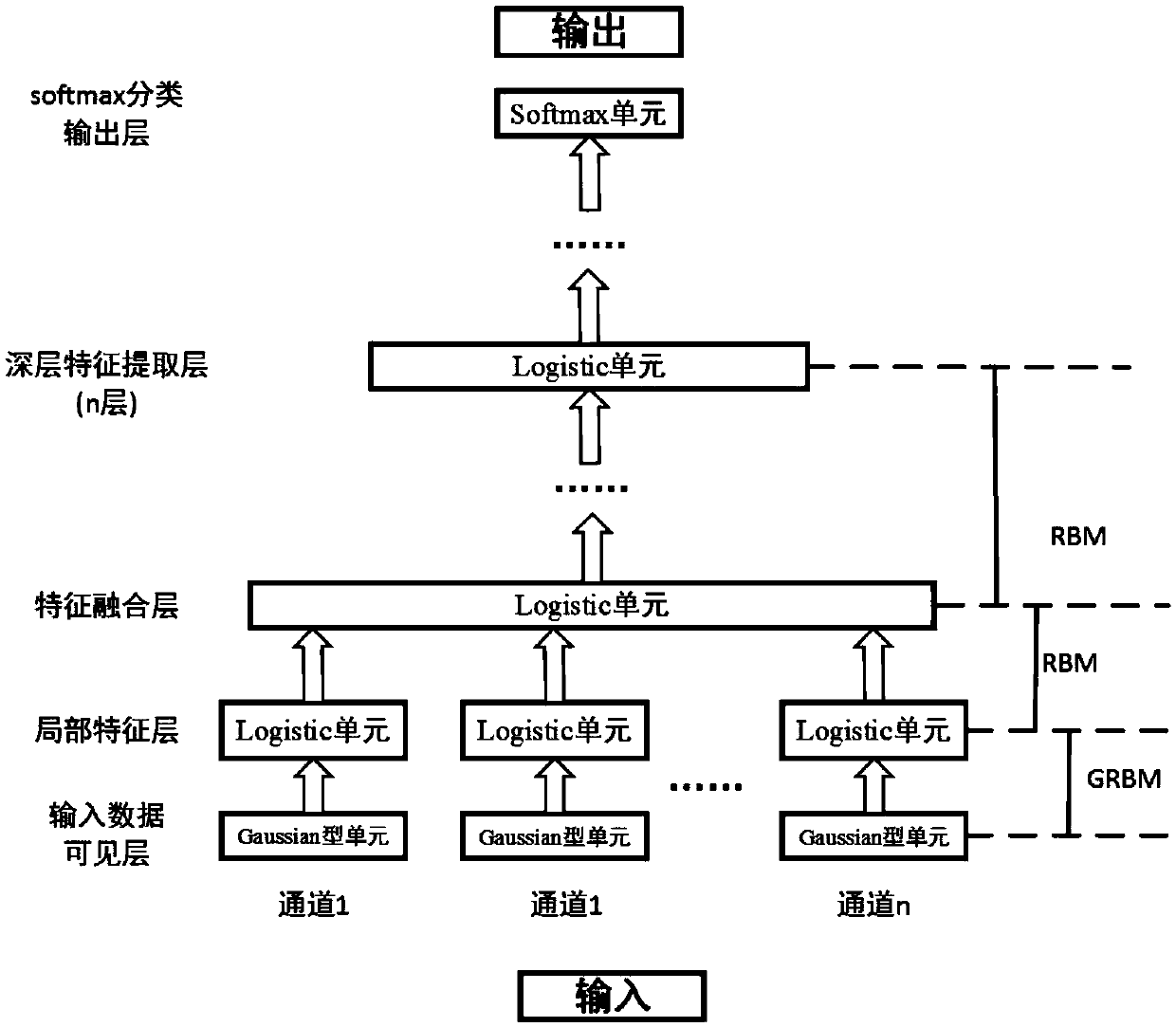CSFL-GDBN-Based Brain-Computer Interface Method for Steady-state Motor Visual Evoked Potentials
A technology of visual evoked potential and computer interface, which is applied in the field of brain-computer interface, can solve the problems of limiting the development of brain-computer interface technology, easy to lose useful features of signals, and unstable classification accuracy, so as to shorten the signal sampling time, signal Effect of short sampling time, improved reliability and feasibility
- Summary
- Abstract
- Description
- Claims
- Application Information
AI Technical Summary
Problems solved by technology
Method used
Image
Examples
Embodiment Construction
[0047] The present invention will be further described in detail below in conjunction with the accompanying drawings and embodiments.
[0048] The CSFL-GDBN-based steady-state motor visual evoked potential brain-computer interface method includes the following steps:
[0049] Step 1), refer to figure 1 , respectively place measuring electrodes A1, A2, A3 on the occipital regions O1, O2, Oz of the subject's head X, place the reference electrode D on the unilateral earlobe of the subject's head X, place The ground electrode E is placed on the forehead Fpz of X, the output terminals of the measuring electrodes A1, A2, A3 are connected to the input terminals F1, F2, F3 of the EEG collector F, and the output terminal of the reference electrode D is connected to the input terminal of the collector F F4, the output terminal of the ground electrode E is connected to the input terminal F5 of the collector F, the output terminal of the collector F is connected to the input terminal of ...
PUM
 Login to View More
Login to View More Abstract
Description
Claims
Application Information
 Login to View More
Login to View More - R&D
- Intellectual Property
- Life Sciences
- Materials
- Tech Scout
- Unparalleled Data Quality
- Higher Quality Content
- 60% Fewer Hallucinations
Browse by: Latest US Patents, China's latest patents, Technical Efficacy Thesaurus, Application Domain, Technology Topic, Popular Technical Reports.
© 2025 PatSnap. All rights reserved.Legal|Privacy policy|Modern Slavery Act Transparency Statement|Sitemap|About US| Contact US: help@patsnap.com



